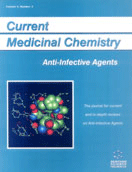Abstract
Antifungal agents constitute a major part of antiinfective drugs and have been in practice since 16th century. Antifungal agents generally belong to the class of polyenes, azoles, apart from other heterocycles, organometallics, etc. Polyenes & azoles as basic moieties act by disrupting the cell wall or cell membrane or protein synthesis. The recent increase in the number of antifungal agents and the discovery that some of the older ones have properties which allow them to be used in new ways led to the development of several new therapeutic regimes. Moreover, various modifications have been attempted to achieve an optimal blend of favourable properties together with minimal potential for undesirable side effects. Thus, it is important to learn the mode of action of these agents, their advantages, and their limitations as this information will be helpful in determining the indications for use of one regimes over the others. In this review, we summarize antifungal agents which are of utmost importance clinically.
Keywords: antifungals, antifungal compounds, antifungal agents, anti-infective
 21
21

